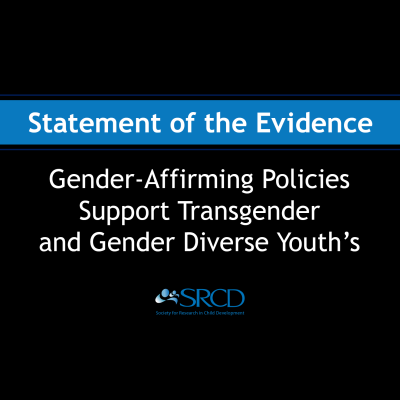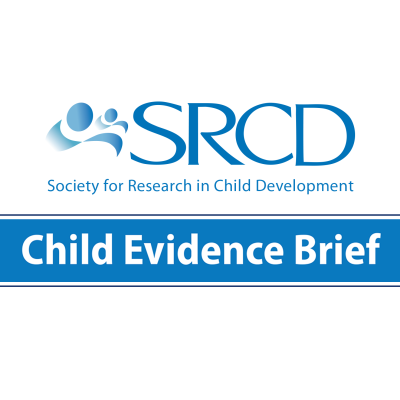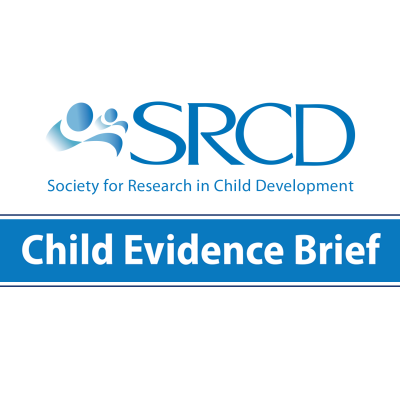Addressing Inequities in Education: Considerations for American Indian and Alaska Native Children and Youth in the Era of COVID-19
Edited by Tiffany Yip, Ph.D., Fordham University. For more information, contact Kelly R. Fisher, Ph.D., Director for Policy, or Nighisti Dawit, M.Sc., Senior Policy Associate, Society for Research in Child Development, at policy@srcd.org.
Authors
- Monica Tsethlikai, Ph.D. (Zuni), Arizona State University
- Michelle Sarche, Ph.D. (Lac Courte Oreilles Ojibwe), University of Colorado, Anschutz Medical Campus
- Jessica V. Barnes, Ph.D., Michigan State University
- Hiram Fitzgerald, Ph.D., Michigan State University
COVID-19 exacerbates the effects of historical trauma on American Indian and Alaska Native (AIAN) communities. High death rates among Elders, parents, and extended family, who are central figures in preserving cultural traditions, threaten children’s ability to overcome adversity. Already at risk for low levels of school achievement, AIAN children are further threatened by school closures due to limited access to broadband services and technology, inadequate access to nutritious food and dedicated space to study at home. Systemic inequalities not only limit access to needed services but also result in the provision of lowquality education and health care, which worsens the negative impact of COVID-19. Policies that direct funds to provide children with culturally informed educational experiences and mental health services, ensure access to broadband and information technology, and honor AIAN families and communities will help mitigate the impact of COVID-19 on AIAN children.
“Despite the fact that the U.S. government has a trust responsibility to provide for the education, health and safety of Native children, resources and support for Native children are currently inappropriate, insufficient, or limited by bureaucracy so that they are ineffective, even in the absence of the current crisis.”
There are 574 federally-recognized tribes in the United States. American Indian and Alaska Native (AIAN) represent 1.7% of the United States population with the population highly concentrated in Alaska, California, Oklahoma, the Southwest and the upper Midwest.1,2 The population is young; with recent US Census estimates showing that nearly one-third of AIANs are age 18 or younger.3 Tribes have a special trust that obligates the federal government to ensure the health and well-being of AIAN people.1 Failure to uphold this obligation has led to inequalities in access to basic human needs such as clean water, plumbing, electricity, internet, cellular service, housing, hospitals, and schools.1 Generations of attempted genocide, systemic racism and oppression, including cessions of land and resources, verbal and physical violence, and police brutality4-6 in AIAN communities have led to disproportionate rates of disease and addiction7-10 which increase the risk of infection and death from COVID-19.11 It is impossible to know the true impact of COVID-19 as data on AIAN people are frequently incomplete, inaccurate or not tracked at all.1 As of July 30, 2020, up to 40% of all COVID-19 cases in New Mexico were American Indian (AIs) despite the fact that AIs are only 9% of the population.12 The Navajo Nation, which spans Arizona, New Mexico and Utah, has had the highest infection rate in the United States.13,14 Even with the national discourse focused on systemic racism and inequality, AIAN communities remain largely unrepresented in mainstream and academic reporting. These inequitable conditions may be experienced as interlocking systems of oppression15 increasing vulnerability for poor educational outcomes. That said, evidence supports what AIAN people have always known; connections to AIAN culture protect and buffer children from the trauma of inequality.16,17
Inequalities in Education Must be Addressed to Mitigate Vulnerability to COVID-19
It is important to understand the negative sociohistorical context of schooling in AIAN communities.18-22 In the early 20th century, almost 83% of AIAN children were forcibly removed from their parents and sent to boarding schools where they were not allowed to speak their tribal languages and were often physically and sexually abused.19,21 Today, 93% of AIAN students attend state-funded public schools and 7% attend Bureau of Indian Education (BIE) schools.23 AIAN high school graduation rates are the lowest in the nation.1,23
The roots of disparity start early and are amplified over time.24 In Arizona and New Mexico, where tribes have had high rates of COVID-19, AI children are 3.5 times more likely to live in poverty, twice as likely to read below grade level in 4th grade, and 1.5 times more likely to be below grade-level proficiency in math in 8th grade compared to non-Hispanic White children.25 Additionally, AI children experience significantly higher median rates of per-student discipline including school suspension and expulsion.26,27
School closures due to COVID-19 threaten to exacerbate existing challenges given that over one-third of AIAN children live in households without broadband internet access (the highest of all groups) and 15% live in homes without a computer – both access issues are further compounded with rural residence.28 Many children live in multigenerational homes and may not have dedicated space available for formal learning.1,29-31 In addition, many families rely on school lunches and do not have transportation to obtain food provided by school lunch programs during the pandemic.11,29,32 The need to attend classes at home or with social distancing, and other safety measures (e.g., face coverings, Plexiglas partitions) will likely harm AIAN children’s learning, as studies have shown they learn best through active participation, observing others, and nonverbal forms of instruction.26,33-35 In addition, more AIAN teachers, tutors and support staff are needed to support AIAN students’ learning.1,36
“What we see repeatedly across national crises and disasters is that the most disenfranchised among the U.S. population are disproportionately harmed physically, emotionally, economically, and educationally.”
Resources are Needed to Buffer Children from COVID-19 Related Trauma
Prior to COVID-19, studies showed that AIAN youth experience more adverse childhood experiences than their non-AIAN peers, including physical abuse and witnessing domestic violence.37,38 Increased financial stress and overcrowding of homes due to COVID-19 are likely to result in even higher rates of domestic violence and abuse.39 Increased exposure to adverse childhood experiences heightens the risk for negative outcomes including suicide attempts, poly-drug use, and Post Traumatic Stress Disorder.37
Studies have found that creating and maintaining connections to language and culture within AIAN communities buffer children from trauma.16,40,41 This includes participating in ceremonies, dancing at Pow Wows, and maintaining strong connections to extended families. Unfortunately, each of these connections will likely be limited due to social distancing and the loss of parents, grandparents, extended family, and elders to COVID-19.
Policy and Practice Implications
To ameliorate the impact of COVID-19 on AIAN children, policymakers and school administrators should:
- Increase funding for Native language instruction and online family culture nights.
- Increase the number of AIAN teachers, tutors, support staff, and mental health professionals available to students.
- Increase broadband infrastructure to ensure access to technology (e.g., computers, tablets) and wireless connectivity.
- Provide additional funding for early education and K-12 programs to incorporate AIAN language and culture in curricula, teaching practices, and family outreach.
- Increase support for AIAN students in both BIE/tribal and public schools through federal programs such as Johnson O’Malley and Title VII Indian Education programs, which provide funding for AIAN students to participate in cultural, language, academic, and dropout prevention programs that they might not otherwise be able to afford.
This brief is part of a larger volume that addresses the impact of systemic racism and the potential exacerbating effects of COVID-19 on racial-ethnic minority children, youth, and families, and LGBTQ+ youth. The full volume includes the following briefs:
- Considerations for American Indian and Alaska Native Children and Youth in the Era of COVID-19
- Considerations for Asian American Children and Youth in the Era of COVID-19
- Considerations for Black Children and Youth in the Era of COVID-19
- Considerations for Latinx Children and Youth in the Era of COVID-19
- Considerations for LGBTQ+ Children and Youth in the Era of COVID-19
Endnotes / References
(1) U.S. Commission on Civil Rights. (2018, December). Broken promises: Continuing federal funding shortfall for Native Americans. https://www.usccr.gov/pubs/2018/12-20-Broken-Promises.pdf
(2) National Congress of American Indians. (2020, February). Tribal nations and the United States: An introduction. http://www.ncai.org/tribalnations/introduction/Indian_Country_101_Updated_February_2019.pdf
(3) United States Census Bureau. (2020, June 25). 2019 population estimates by age, sex, race and Hispanic origin. https://www.census.gov/newsroom/press-kits/2020/population-estimates-detailed.html
(4) Woodard, S. (2016, October 17). The police killings no one is talking about. In These Times. https://inthesetimes.com/features/native_american_police_killings_native_lives_matter.html
(5) Lakota People's Law Project. (2015, February). Native Lives Matter. https://s3-us-west-1.amazonaws.com/lakota-peoples-law/uploads/Native-Lives-Matter-PDF.pdf
(6) Equal Justice Initiative. (2016, October 31). Police killings against Native Americans are off the charts and off the radar. https://eji.org/news/native-americans-killed-by-police-at-highest-rate-in-country/
(7) Park-Lee, E., Lipari, R. N., Bose, J., Hughes, A., Greenway, K., Glasheen, C., . . . Cajka, J. (2018, July). Substance use and mental health issues among U.S.-born American Indians or Alaska Natives residing on and off tribal lands. Substance Abuse and Mental Health Services Administration. https://www.samhsa.gov/data/sites/default/files/cbhsq-reports/DRAIANTribalAreas2018/DRAIANTribalAreas2018.pdf
(8) Walls, M. L., & Whitbeck, L. B. (2011). Distress among Indigenous North Americans: Generalized and culturally relevant stressors. Society and Mental Health, 1(2), 124-136. https://doi.org/10.1177/2156869311414919
(9) Whitbeck, B. L., Chen, X., Hoyt, D. R., & Adams, G. W. (2004). Discrimination, historical loss and enculturation: Culturally specific risk and resiliency factors for alcohol abuse among American Indians. Journal of Studies on Alcohol, 65(4), 409-418. https://doi.org/10.15288/jsa.2004.65.409
(10) Ehlers, C. L., Gizer, I. R., Gilder, D. A., Ellingson, J. M., & Yehuda, R. (2013). Measuring historical trauma in an American Indian community sample: Contributions of substance dependence, affective disorder, conduct disorder and PTSD. Drug and Alcohol Dependence, 133(1), 180-187. https://doi.org/10.1016/j.drugalcdep.2013.05.011
(11) Kakol, M., Upson, D., & Sood, A. (2020). Susceptibility of Southwestern American Indian Tribes to Coronavirus Disease 2019 (COVID-19). The Journal of Rural Health. Advance online publication. https://doi.org/10.1111/jrh.12451
(12) Conger, K., Gebeloff, R., & Oppel, R. A. (2020, July 30). Native Americans feel devastated by the virus yet overlooked in the data. The New York Times. https://www.nytimes.com/2020/07/30/us/native-americans-coronavirus-data.html
(13) Doshi, S., Jordan, A., Kelly, K., & Solomon, D. (2020, June 18). The COVID-19 response in Indian country: A Federal failure. Center for American Progress. https://www.americanprogress.org/issues/green/reports/2020/06/18/486480/covid-19-response-indian-country/
(14) Smithers, G. D. (2020, May 20). Covid-19 has been brutal in Indian country - just like past epidemics were. The Washington Post. https://www.washingtonpost.com/outlook/2020/05/20/covid-19-has-been-brutal-indian-country-just-like-past-epidemics-were/
(15) Velez, G., & Spencer, M. B. (2018). Phenomenology and intersectionality: Using PVEST as a frame for adolescent identity formation amid intersecting ecological systems of inequality. New Directions for Child and Adolescent Development, 161, 75-90. https://doi.org/10.1002/cad.20247
(16) Henson, M., Sabo, S., Trujillo, A., & Teufel-Shone, N. (2017). Identifying protective factors to promote health in American Indian and Alaska Native adolescents: A literature review. The Journal of Primary Prevention, 38(1-2), 5-26. https://doi.org/10.1007/s10935-016-0455-2
(17) Walters, K. L., Johnson-Jennings, M., Stroud, S., Rasmus, S., Charles, B., John, S., . . . Boulafentis, J. (2018). Growing from our roots: Strategies for developing culturally grounded health promotion interventions in American Indian, Alaska Native, and Native Hawaiian communities. Prevention Science, 21(supp. 1), 54-64. https://doi.org/10.1007/s11121-018-0952-z
(18) Barnes-Najor, J. V., Thompson, N. L., & Wilson, S. (2019). Understanding the implications of systems of privilege within the field of early childhood education for American Indian and Alaska Native children. In H. E. Fitzgerald, D. J. Johnson, D. B. Qin, F. A. Villarruel, & J. Norder (Eds.), Handbook of children and prejudice: Integrating research, practice, and policy (pp. 99-114). Springer.
(19) Cromer, L. D., Gray, M. E., Vasquez, L., & Freyd, J. J. (2017). The relationship of acculturation to historical loss awareness, institutional betrayal, and the intergenerational transmission of trauma in the American Indian experience. Journal of Cross-Cultural Psychology, 49(1), 99-114. https://doi.org/10.1177/0022022117738749
(20) Evans-Campbell, T. (2008). Historical trauma in American Indian/Native Alaska communities: A multilevel framework for exploring impacts on individuals, families, and communities. Journal of Interpersonal Violence, 23(3), 316-338. https://doi.org/10.1177/0886260507312290
(21) Running Bear, U., Thayer, Z. M., Croy, C. D., Kaufman, C. E., Manson, S. M., & The AI-SUPERPFP Team. (2019). The impact of individual and parental American Indian boarding school attendance on chronic physical health of Northern Plains Tribes. Family and Community Health, 42(1), 1-7. https://doi.org/10.1097/FCH.0000000000000205
(22) Evans-Campbell, T., & Campbell, C. D. (2014). Far from home: Child welfare in American Indian/Alaska Native communities. In J. R. Conte (Ed.), Child abuse and neglect worldwide (Vol. 2, pp. 241-256). Praeger/ABC-CLIO.
(23) National Indian Education Association. (2020). National Indian Education Association. https://www.niea.org
(24) Marks, A. K., & García Coll, C. (2007). Psychological and demographic correlates of early academic skill development among American Indian and Alaska Native youth: A growth modeling study. Developmental Psychology, 43(3), 663-674. https://doi.org/10.1037/0012-1649.43.3.663
(25) Annie E. Casey Foundation. (2019). 2019 KIDS COUNT data book: State trends in child well-being. https://www.aecf.org/m/resourcedoc/aecf-2019kidscountdatabook-2019.pdf
(26) Chin, J., Brayboy, B. M. J., & Bustamante, N. (2018). Carceral colonialisms: Schools, prisons, and Indigenous youth in the United States. In E. A. McKinley & L. T. Smith (Eds.), Handbook of Indigenous education (pp. 1-30). Springer, Singapore. https://doi.org/10.1007/978-981-10-1839-8
(27) Sprague, J. R., Vincent, C. G., Tobin, T. J., & CHiXapkaid (Michael Pavel). (2013). Preventing disciplinary exclusions of students from American Indian/Alaska Native backgrounds. Family Court Review, 51(3), 452-459. https://doi.org/10.1111/fcre.12042
(28) Future Ready Schools. (2020, July 20). Students of color caught in the homework gap. Alliance for Excellent Education. https://futureready.org/wp-content/uploads/2020/07/HomeworkGap_FINAL7.20.2020.pdf
(29) National Urban Indian Family Council. (2020). Resiliency in crisis: The impact of the COVID-19 pandemic on the urban American Indian nonprofit sector. https://static1.squarespace.com/static/5b985402e17ba31b72a52f90/t/5ea1c684be7b77187ae6cab9/1587660440040/2020+NUIFC+COVID-19+Report.pdf
(30) Pindus, N., Kingsley, G. T., Biess, J., Levy, D., Simington, J., Hayes, C., & Urban Insitute. (2017). Housing needs of American Indians and Alaska Natives in tribal areas: A report from the assessment of American Indian, Alaska Native, and Native Hawaiian housing needs. U.S. Department of Housing and Urban Development. https://www.huduser.gov/portal/publications/HNAIHousingNeeds.html
(31) Blosser, J., Corum, N., Glenn, D., Kunkel, J., & Rosenthal, E. (2014). Best practices in tribal housing: Case studies 2013. U.S. Department of Housing and Urban Development. https://www.huduser.gov/portal/publications/SCIC_Best_Practices.html
(32) Hoover, E. (2020). Native food systems impacted by COVID. Agriculture and Human Values, 37(3), 569-570. https://doi.org/10.1007/s10460-020-10089-7
(33) BigFoot, D. S. (2011). The process and dissemination of cultural adaptations of evidence-based practices for American Indian and Alaska Native children and their families. In M. C. Sarche, P. Spicer, P. Farrell, & H. E. Fitzgerald (Eds.), American Indian and Alaska Native children and mental health: Development, context, prevention, and treatment (pp. 285-307). Praeger/ABC-CLIO.
(34) Harrington, B. G., & CHiXapkaid (D. Michael Pavel). (2013). Using Indigenous educational research to transform mainstream education: A guide for P-12 school leaders. American Journal of Education, 119(4), 487-511. https://doi.org/10.1086/670962
(35) Tsethlikai, M., & Rogoff, B. (2013). Involvement in traditional cultural practices and American Indian children's incidental recall of a folktale. Developmental Psychology, 49(3), 568-578. https://doi.org/10.1037/a0031308
(36) Barnes-Najor, J. V., Thompson, N. L., Cameron, A. F., Smith, T. M., Calac Verdugo, M., Brown, P. L., & Sarche, M. C. (2020). Cultural and practice perspectives on the Classroom Assessment Scoring System: Voices from American Indian and Alaska Native Head Start programs. Journal of Research in Childhood Education. Advance online publication. https://doi.org/10.1080/02568543.2020.1723749
(37) Brockie, T. N., Dana-Sacco, G., Wallen, G. R., Wilcox, H. C., & Campbell, J. C. (2015). The relationship of adverse childhood experiences to PTSD, depression, poly-drug use and suicide attempt in reservation-based Native American adolescents and young adults. American Journal of Community Psychology, 55(3-4), 411-421. https://doi.org/10.1007/s10464-015-9721-3
(38) Kenney, M. K., & Singh, G. K. (2016). Adverse childhood experiences among American Indian/Alaska Native children: The 2011-2012 National Survey of Children's Health. Scientifica. https://doi.org/10.1155/2016/7424239
(39) Substance Abuse and Mental Health Services Administration. (2020). Intimate partner violence and child abuse considerations during COVID-19. https://www.samhsa.gov/sites/default/files/social-distancing-domestic-violence.pdf
(40) BigFoot, D. S., & Schmidt, S. R. (2010). Honoring children, mending the circle: Cultural adaptation of trauma-focused cognitive-behavioral therapy for American Indian and Alaska Native children. Journal of Clinical Psychology, 66(8), 847-856. https://doi.org/10.1002/jclp.20707
(41) Goodkind, J. R., LaNoue, M. D., & Milford, J. (2010). Adaptation and implementation of cognitive behavioral intervention for trauma in schools with American Indian youth. Journal of Clinical Child & Adolescent Psychology, 39(6), 858-872. https://doi.org/10.1080/15374416.2010.517166
References for Quotes:
The Alyce Spotted Bear and Walter Soboleff Commission on Native American Children (2020, April 23). Press release.
Fortuna, L. R., Tolou-Shams, M., Robles-Ramamurthy, B., & Porche, M. V. (2020). Inequity and the disproportionate impact of COVID-19 on communities of color in the United States: The need for a trauma-informed social justice response. Psychological Trauma: Theory, Research, Practice, and Policy, 12(5), 443-445. http://doi.org/10.1037/tra0000889


